Got a question? Text us on Whatsapp
+1 617 404 2125
- Tours in San Antonio

San Antonio Attractions
Natural bridge wildlife ranch, attractions details, find it on google maps.
5 stars 4 stars 3 stars 2 stars 1 star 0.00/5 - (0 Votes) Colm Local tour guide "Make sure to visit the Natural Bridge Wildlife Ranch during the weekday mornings when it's less crowded; this way you have a better chance of seeing the animals when they're most active and have closer encounters. Don't miss the giraffe feeding area – it's a hit with both kids and adults, and the giraffes are especially friendly then!"
What is Natural Bridge Wildlife Ranch?
The Natural Bridge Wildlife Ranch is an African Safari, Texas-Style adventure that you wouldn't expect in the rolling hills just outside San Antonio. It's a unique place where you can drive through hundreds of acres of picturesque landscapes and encounter over 500 animals representing over 40 species. As I love to tell first-timers, it's not just a drive-thru animal park; it's an opportunity to get up-close and personal with some of nature's most fascinating creatures—all from the comfort of your vehicle.
Our Most Popular Tour:

Are you ready to explore one of America’s most interesting cities all in half a day? Forget everything you think you know about guided tours when you come...
Here, you can see a wide array of wildlife from around the world, roaming freely as they do in the wild, which makes for an educational and entertaining experience for all ages. Get your cameras ready! You might just capture an elegant giraffe leaning down to peer into your window or a herd of zebras trotting by. It's a chance to immerse yourself in a wildlife adventure without the need for a passport.
History of Natural Bridge Wildlife Ranch
Opening its gates back in 1984, the Natural Bridge Wildlife Ranch has evolved from a small, family-owned farm with a passion for preserving and showcasing wildlife to a full-fledged safari park that has become a much-loved destination for locals and visitors alike. The name itself stems from a natural limestone bridge on the property, which turned out to be a fortuitous site for connecting people with nature.
Over the years, they've continuously expanded the grounds and the number of species that call the ranch home. Did you know that this place has also participated in conservation efforts, particularly with species that are threatened in their natural habitats? This commitment to wildlife is a core part of their ethos, ensuring that every visit contributes to a larger cause.
Why is Natural Bridge Wildlife Ranch Important?
Natural Bridge Wildlife Ranch serves an incredibly important role, both as an educational resource and as a conservation center. It introduces visitors to species they may never have the chance to see otherwise, highlighting the importance of wildlife preservation around the globe.
For local ecosystems, the ranch also provides a sanctuary for various species that thrive under its care. It's a living classroom, showcasing the behaviors and interactions of different animals—encouraging understanding and appreciation, and kindling a spirit of conservation in those who roll through its terrain.
Things to Do & See at Natural Bridge Wildlife Ranch
The main event, of course, is the road safari, where visitors can slowly wind their way through the various habitats. It's an interactive affair; you can purchase animal feed at the entrance and experience the joy of feeding a curious llama or a gentle bison that approaches your vehicle. Just be prepared—those close encounters might include a slobbery hello from a friendly ostrich!
Our Top Trending United States Tours:

Chicago Loop Architecture Private Walking Tour

San Francisco Instagram Tour: The Most Famous Spots

Boston Instagram Tour: The Most Famous Spots
Don't miss the Walk-A-Bout area, where getting out of your car is encouraged. Stroll along and enjoy giraffe feeding, the petting barnyard, and the chance to observe some critters that prefer a more 'pedestrian-friendly' setting. There's also the Safari Camp Grill for a bite to eat, and the Safari Trading Post, where unique souvenirs await to commemorate your safari adventure.
Educational programs and seasonal events are sprinkled throughout the year, so there's always something new to learn or experience at the ranch. These programs are not just enjoyable—they're bred from a deep understanding of animal behaviors and environmental stewardship, which only enriches the visitor experience.
Frequently asked questions
The Natural Bridge Wildlife Ranch is an African Safari, Texas-Style wildlife park in San Antonio where visitors can see and feed a variety of native and exotic animals from their cars.
Visitors to the Natural Bridge Wildlife Ranch can see and feed a range of animals including giraffes, zebras, rhinos, lemurs, peacocks, and various species of deer and antelope among others.
Yes, the Natural Bridge Wildlife Ranch is open year-round, but hours and days of operation may vary by season, so it's recommended to check their website or call ahead before planning your visit.
The Natural Bridge Wildlife Ranch offers visitors the chance to experience a drive-thru safari where they can feed animals from their vehicles. They may also have seasonal events or educational programs available.
Yes, visitors can purchase feed at the ranch to give to certain animals during their drive-thru safari experience. However, there are guidelines and restrictions on feeding to ensure the safety of both visitors and animals.

Mission Concepción

Central Library
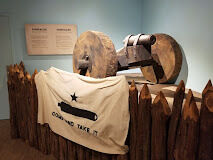
Battle for Texas: The Experience
Your browser is not supported for this experience. We recommend using Chrome, Firefox, Edge, or Safari.
E-News Sign Up
Visitor guide.
© 2024 Visit San Antonio. All Rights Reserved.
- Destinations
- Travel Videos
- Around Houston
- Historic Forts in Texas
- Historic Sites on the Texas Gulf Coast
- Historic Homes in Texas You Must Visit
- Where to Go Stargazing in Texas
- Texas Revolution Historic Sites
- Texas State Parks in South Texas
- Texas State Parks near Abilene, Amarillo & Midland
- Texas State Parks near Austin
- Texas State Parks near Dallas
- Texas State Parks near El Paso & Big Bend
- Texas State Parks near Houston
- Texas State Parks near San Antonio
- Texas State Parks near Tyler
- Beaches of Texas
- Things to Do in Texas
- Attractions
- Featured Events
- Texas Road Trips
- Places to Stay
- Browse Free Brochures
- Shopping Cart
- Texas State Historical Sites
- Texas State Parks

Natural Bridge Wildlife Ranch in San Antonio
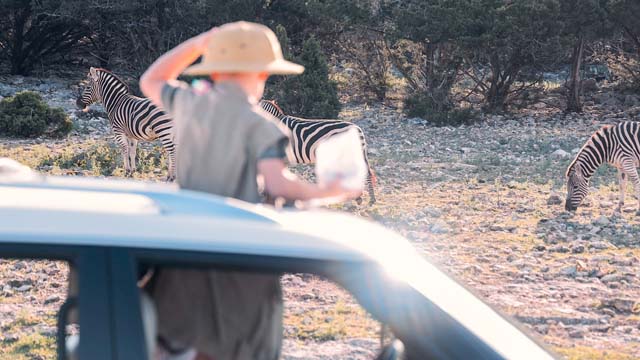
Your globe-spanning wildlife safari in Texas starts behind the wheel of your very own car. With a handy guidebook that will help you identify all the ranch’s animals, you’ll cruise along the scenic winding roads spotting American bison, African crowned cranes, and much more. Don’t drive too fast as some of these animals will walk right up to your vehicle, an ideal time to unroll your window and toss out with a handful of food or strike a pose for a one-of-a-kind selfie. Although any time of the year is good to visit, spring offers the best chance to see young zebras, llamas, antelopes, and other animals.
Although your self-guided wildlife safari could fill up most of your day, it is by no means the only thing to do at Natural Bridge Wildlife Ranch. Get face-to-face with a towering giraffe, watch energetic ring-tailed lemurs play, and snap some photos at the Walk-A-Bout part of the ranch.
Spend enough time exploring the ranch and you’ll likely work up an appetite as big as the Serengeti, so herd your flock on over to the Safari Camp Grill. The eatery’s menu features fare both light and robust, as well as a dessert selection that includes Zebra a la Mode. Speaking of dessert, you can also stop by the Safari Sweet Spot for some homemade fudge or a cold beverage. Order whatever your taste buds crave, then sit on the covered patio and watch the giraffes meander by. Think you’re done yet? Not a chance! After all, what would a visit to the Natural Bridge Wildlife Ranch be without a souvenir? Pay a visit to the Safari Trading Post for a unique memento, such as a t-shirt, cup, silver giraffe pendant, or even an ostrich egg.
Embark on an African Safari, Texas Style right here in Texas, and enjoy a remarkable day out with the whole family, at Natural Bridge Wildlife Ranch.
Natural Bridge Wildlife Ranch Hours & Admission Prices
Natural Bridge Wildlife Ranch Slideshow
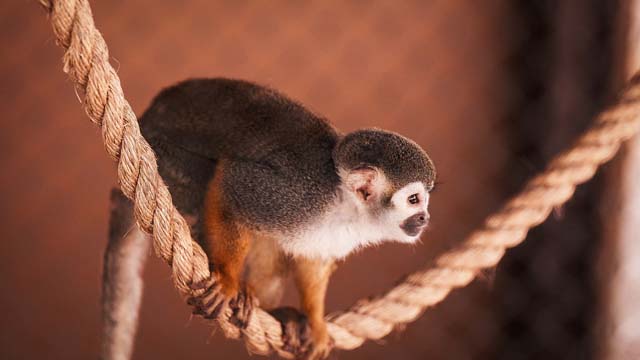
View Natural Bridge Wildlife Ranch Slideshow

Natural Bridge Wildlife Ranch Social
Share This Page with Someone
Our message to your friend.
I thought you might be interested in this story from the Tour Texas web site:
Natural Bridge Wildlife Ranch
(Your comments will appear here)
Order Brochures
Other Travel Brochures you may be interested in that are nearby your selection:

Having Fun in the Texas Sun
Family friendly Texas Destinations
Natural Bridge Wildlife Ranch, San Antonio

A zoo where the animals come to you, Natural Bridge Wildlife Ranch in San Antonio is a drive-thru animal park where you can feed the animals, and walk around parts of the park to see the giraffes, primates and other animals. Check out my Mommy Tips before you go!

Natural Bridge is a huge park, at over 450 acres and more than 500 animals, made up of 45 different species! The drive can take you from an hour to 2 hours, depending on how much you enjoy stopping and watching the animals! I love to just stop and watch them interact with each other and act like animals, instead of the unnatural behavior of coming to the car, but my kids love to feed them, of course, so we compromise and our visits take a while! Of course, you can always drive more than once through the park on the same day, but you can’t leave and then come back.
Know Before You Go
Arrive early, when it’s cooler and the animals are hungry. They seek shade later in the day and aren’t as likely to come to your car for food.
If like me, you like to stop alot, stay to the right. Everyone does the drive at their own pace (as long as it’s under the posted speed limit). Faster drivers can pass on the left.
Go to the restroom before you start your self-guided tour.
Pack water/drinks and snacks for yourself, but please only feed the animals the food you can purchase for them there.
Dogs or other animals are not allowed to ride with you.
The Safari Grill is a nice break before a second drive through or the Walk-About area.
Discount Coupons are available at the San Antonio Visitors Alliance , however they aren’t able to be used during Summer weekends.
Last, but definitely not least, be sure to have plenty of gas before arriving to the park.

My daughter, who interned in Kenya and spent many days on safaris, enjoys that there aren’t lions coming up to the car, or monkeys who steal her food.

I love the zebras!

The baby animals are the best!

Natural Bridge Wildlife Ranch
26515 Natural Bridge Caverns Road, San Antonio
Click HERE to visit their website.
Keep Having Fun in the Texas Sun!
Having Fun in the TEXAS Sun is on PINTEREST! Use it as a quick resource to find activities in different Texas towns! Click HERE !
© Having Fun in the Texas Sun , 2021. Unauthorized use and/or duplication of this material without express and written permission from this blog’s author and/or owner is strictly prohibited. Excerpts and links may be used, provided that full and clear credit is given to Having Fun in the Texas Sun with appropriate and specific direction to the original content.
Please click HERE to read our disclaimer.
Share this:
Published by havingfuninthetexassun
View all posts by havingfuninthetexassun
Discover more from Having Fun in the Texas Sun
Subscribe now to keep reading and get access to the full archive.
Type your email…
Continue reading

- My Account
- Things to Do
- My Bucket List
- Settings
- Support
- Privacy Policy
- Terms of Services

Explore the Wildlife Ranch Drive-through Safari
Discover a world of exotic animals on a thrilling drive-through safari adventure in the heart of Texas!
Admission: $28.99 (adults) and $19.99 (kids); Guided Safari Shuttle: $149.99; Safari Adventure Tour: $229.99
More than 500 Miles from you
State Gem: Exceptional experiences within your state that are bucket list-worthy Learn more
Description
At the Wildlife Ranch, guests can enjoy an incredible drive-through safari where they will encounter a variety of fascinating animals from around the world. Choose from three exciting ways to explore the safari: drive through in your own car, join a Guided Safari Trek on a shuttle, or experience the exclusive Safari Adventure Tour with a Giraffe Encounter. Learn about the animals' habitats, conservation efforts, and unique characteristics while taking part in guided tours led by experienced Safari Animal Rangers. No matter which option you choose, an unforgettable adventure awaits you at the Wildlife Ranch.
What's included
Perfect for.

Unlock the Ultimate Bucket List
For Adventurers and Explorers
Our Benefits:
- Map View
- Ad-Free Browsing
- Exclusive Discounts
- Curated Experiences
- TikToks
- Itineraries
- Packing Lists
- Up-to-date Info
7 days free, then only $2.49 a month Billed annually, cancel anytime
TikTok videos
- Arrive at the Wildlife Ranch
- Purchase admission or optional guided tour tickets
- Enjoy your drive-through Safari
- Explore the Walk-A-Bout area with giraffes
Location & Hours
26515 Natural Bridge Caverns Rd, San Antonio, TX 78266
Working Hours
Packing List
- Comfortable clothing
- Water bottle
4.4 ● Google reviews
Alfio Veasey
a month ago
Julia Maxwell
Dallas Stroud
2 months ago
Jessica Logemann
3 months ago
Nearby experiences
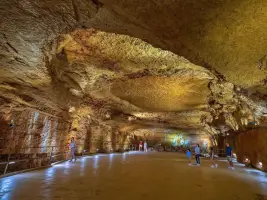
Discover Underground Wonders at Natural Bridge Caverns

Discover the San Antonio Botanical Garden

Experience a Night of Unforgettable Live Jazz at JazzTX

Swim and Relax at Wimberley's Blue Hole Regional Park

Join the San Marcos Nighttime Glow Kayak and Paddle Board Tour

Best Summer Fun on the River at Don's Fish Camp
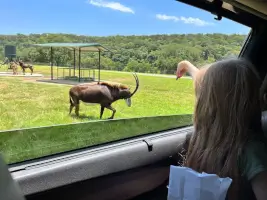
Nearby cities
More in category - for solo, more in category - for two, more in category - for groups, more in category - for families with kids, more in category - for parents and grownups, more in category - outdoorsy, more in category - chill, nearby towns.

Discover Austin Texas! An Austin blog with hundreds of unique articles.
Take a Day Trip Safari Adventure to Natural Bridge Wildlife Ranch
January 8, 2018 by Brittany Ballard Leave a Comment
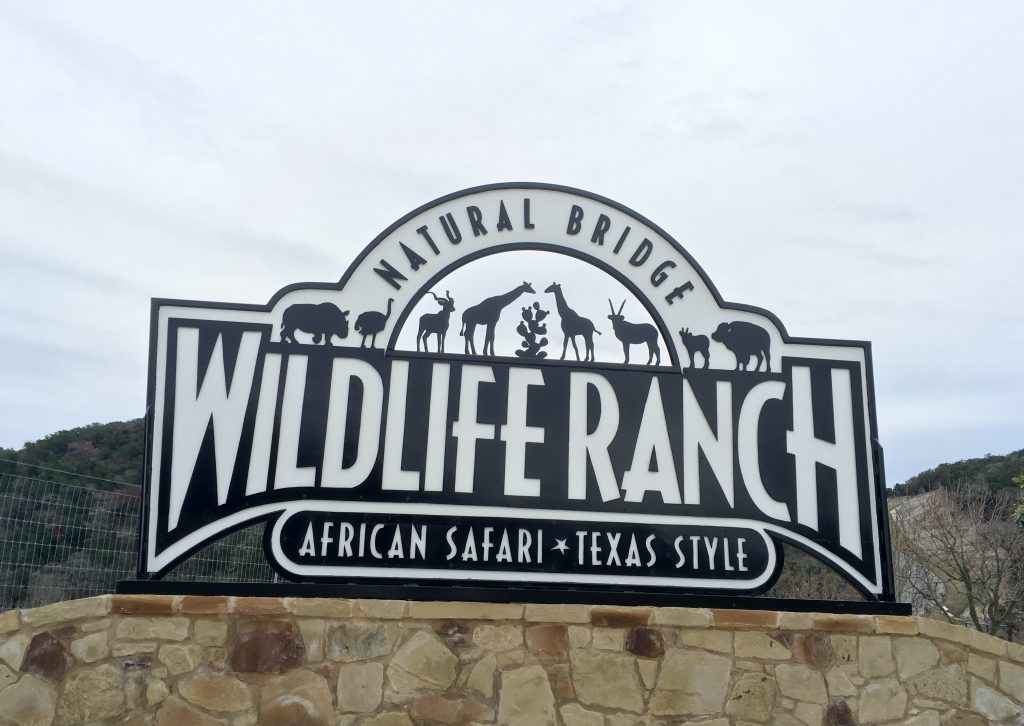
Natural Bridge Wildlife Ranch is about an hour south of Austin and features an African safari, Texas-style
Whether you’re a giraffe lover or just an animal lover in general, I have the day trip adventure for you to put on your calendar next. Natural Bridge Wildlife Ranch is just an hour south of Austin on the outskirts of San Antonio. The ranch is a fun twist on traditional animal-viewing experiences and features a Texas-style African safari.
What Is Natural Bridge Wildlife Ranch?
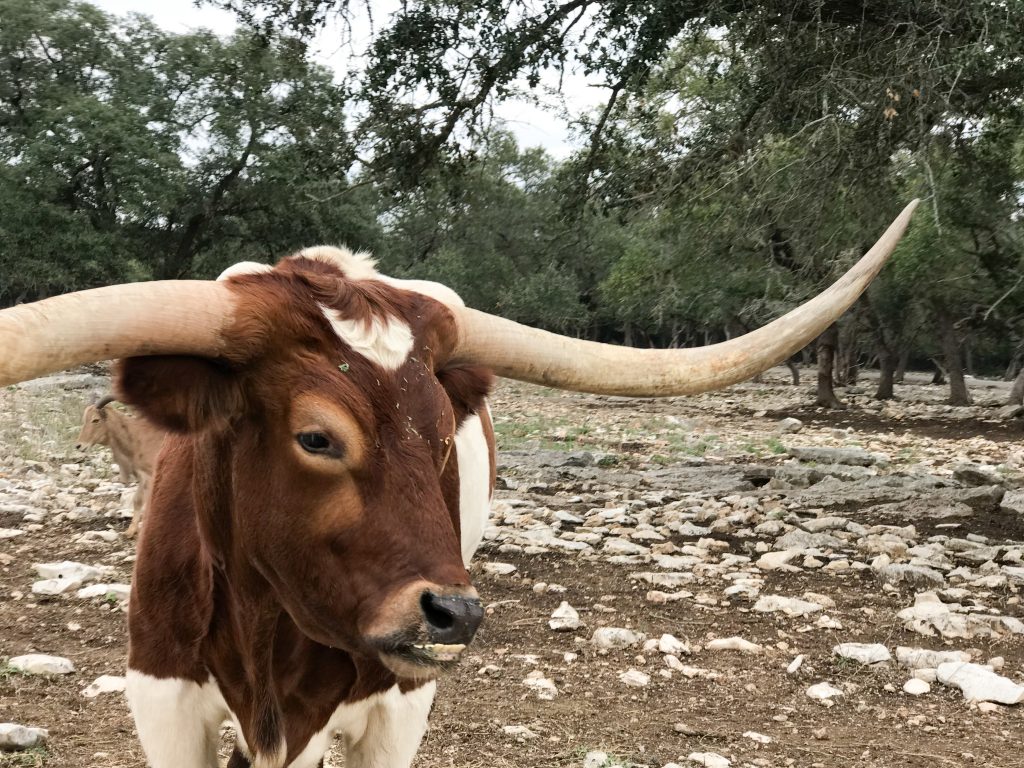
Get up close and personal on your safari as resident animals roam the property, straight up to your vehicle
Natural Bridge Wildlife Ranch was created in 1984, after the family owners visited similar parks in the northeast and decided they wanted to add diversity to the area around Natural Bridge Caverns . The ranch originally spanned 200 acres, but has grown to cover a whopping 450 acres. It’s the longest running and most visited safari in Texas.
The ranch is inhabited by over 500 animals in a “home away from home.” More than 40 species from all over the world are represented, including native, exotic, and endangered wildlife. Some of the beautiful animals you’ll see are giraffes, rhinos, zebras, lemurs, wildebeests, and ostriches.
The main attraction at Natural Bridge Wildlife Ranch is its Texas-style African safari, which spans six miles of trail throughout the property. The fun part of this adventure? You experience it all from the comfort of your car. Animals are free-roaming throughout the drive and come up to your vehicle to get food.
What Can You Expect When You Visit?

There are over 500 animals at Natural Bridge Wildlife Ranch, most of which you can feed straight from your car as you drive through the safari
Buckle up because you’re in for the ride of your life. The fun starts before you even get to the admissions booth. Just beyond the entrance lies a giraffe enclosure and barn. The newest star and addition to the family, darling Faith, is often standing with her mama at the front to greet visitors. While you’re waiting in line, you can just stare at them in awe. I know I did!
Once you get to the admissions booth, you’ll get a bag of feed for the car (with the option to buy more) and a safari map. From there, you can choose between a few options: start by checking out the petting zoo and Lemur Island, visit with the giraffes at the front, or head straight onto the adventurous safari.
If you don’t stop to walk along the giraffe barns and enclosure, I recommend beginning by driving straight to the safari. The drive can take from an hour to two hours, depending on how long you linger with the animals. Cars will be lined up on the side of the road for picture-taking and feeding the visiting wildebeests, zebras, and other animal friends. If you’ve finished at your stop, you are free to drive around those who are still parked. Just be careful to steer clear of anyone else on the road–be it vehicle or animal.

Check out Lemur Island before leaving and feed some of the koi fish in the pond surrounding them.
If you decide to turn into Tower Creek, about halfway through the main path, you’ll get to see another gorgeous herd of giraffes (called a tower), along with ostriches and other fun animals. There’s also a Sweet Stop and restrooms, so this is the perfect place for a quick break before you head over to the zebras and rhinos.
At the end of the safari, you can stop back at the base camp for more fun. There’s a petting barnyard with some lively goats. If you have extra feed after your drive through the safari, use it here and give your kiddos one more chance to get up close and personal with the animals. Lemur Island is in the middle of a koi fish feeding pond, and there are a few more animal enclosures to see while you’re in the area.
If you’re feeling a little munchy after the safari, stop by the park’s Safari Camp Grill to grab some grub and fuel up. You’ll find a range of items on the menu, from pulled pork BBQ sandwiches, to personal pizzas, to burgers.
Giraffe Conservation Efforts at Natural Bridge Wildlife Ranch

New addition to the giraffe family at Natural Bridge Wildlife Ranch, baby Faith, and her mother. NBWR has a successful giraffe breeding program and Faith is their 32nd giraffe!
Natural Bridge Wildlife Ranch is proud of its successful giraffe breeding program, which recently welcomed its 32nd baby giraffe, Faith, on Nov. 9, 2017. Faith is the third generation of giraffes born on the property. The park is also home to a rare pair of giraffe twins born in 2013, only the ninth known living set in the world.
“Forty percent of all giraffe subspecies have been lost in the last 30 years,” says Tiffany Soechting, resident animal specialist at Natural Bridge Wildlife Ranch. She hand-reared Buddy, the male giraffe twin. The inseparable bond that was created became the driving force for her being a voice for giraffes.
On World Giraffe Day, June 21, Soechting teamed up with fellow giraffe conservationists Ashley Davison, Fred Bercovitch, and Catherine Land to establish Save the Giraffes , a nonprofit organization dedicated to guaranteeing the protection and preservation of giraffes in their natural habitat. The organization has been able to give money to three different projects since its creation: Chimpembele, GPS Collaring, and Project Giraffe.
Between its fun, unique safari and dedication to preserving endangered species, Natural Bridge Wildlife Ranch is an all-around great experience. And if you decide that one time through the safari isn’t enough, you don’t have to worry about paying to go through again. Visitors can enjoy the adventure as many times as they like before the park closes for the day.
26515 Natural Bridge Caverns Road, San Antonio, TX – Website
@theAustinot wants to know:
Have you ever been on a Texas-style safari?
Leave a Reply Cancel reply
Your email address will not be published. Required fields are marked *
Save my name, email, and website in this browser for the next time I comment.
Recent Posts
- 10 Fun Things to do in Austin this weekend of August 30, 2024 include Galveston Labor Day Weekend, FIA World Endurance Championships, and More!
- Don’t Miss Galveston Labor Day Weekend! A Dazzling Display of Fireworks, Drones, Wine, and More Awaits!
- Art, History, & Oddities – Your Guide to 18 Museums in Austin!
- Discover Top Austin Flea Market Spots and Shop, Explore, Save!
- Best Seafood in Austin – 15 Must-Try Restaurants & Dishes!
Welcome to The Austinot
We are all about Austin: the vibe, the people and the uniqueness of the city. We love to explore. Get to know us! We’ll respond if you comment. Heck, we’ll probably invite you to come and hang out with us!
Follow along to help support and learn more about local businesses, artists, and events.
-The Austinot Team
Trending Posts
- Shop Local at 10 Trend-setting Menswear Clothing Stores in Austin
- Birthday Freebies Austin 2023 – List of Over 45 Best Restaurants, Food Places, & Stores with Birthday Month Deals Near You
- Austin’s Speakeasy Secrets (Shhh): Floppy Disk Repair Co.
- 8 Laid-back Waterfront Restaurants in Austin (Besides The Oasis)
- Austin’s Speakeasy Secrets (Shhh): Here Nor There

Top 12 Must See Drive Through Safaris in Texas
Note: This post may contain affiliate links! Check our disclaimer if you need more info!

Looking for a drive through safari in Texas? Or want to know all the dive through safaris in Texas?
This might come as a surprise but you can experience an African safari right here in the great state of Texas! Granted, very little tops seeing these majestic creatures in their homeland but if you’re looking for a Texan substitute, we’ve got a list of all the places you can find a drive through safari in Texas.
Looking for more Texas fun? Check out this list of the best amusement parks in Texas !
Before heading out on your adventure to explore drive through safaris in Texas, please call to verify operating hours, animal availability, and all the other fun details!
Drive Through Safaris in Texas
Natural bridge wildlife ranch , san antonio.
Explore 450 acres of Texas Hill Country during this 1.5 hour Texas drive through safari featuring animals from all over the world. Each car is provided a bag of animal feed with the cost of admission. The animals in the ranch will come to your vehicle to eat and allow you an up close view of their beauty. You will see buffalos, zebras, and ostriches during your adventure.
View this post on Instagram A post shared by Natural Bridge Wildlife Ranch (@naturalbridge.wildliferanch)
Visitors can even explore the wildlife ranch on foot. You can relax at the on-site cafe and visit the lemur habitat and the giraffe center. Finish off your day by stopping at the gift shop for a nice souvenir of your day.
Aggieland Safari , Bryan
Want to visit a “traditional” zoo and experience a drive through safari in Texas all at the same time? Aggieland Safari in Bryan is the place to be! Admission includes entrance to their 250+ acre drive-thru safari. For a small additional fee, you can receive a bucket of feed to share with the over 100 animals that call Aggieland Safari home. Experience a personal visit from each of the animals on the safari without ever having to leave your car.
View this post on Instagram A post shared by Aggieland Safari (@aggielandsafari)
But the fun at Aggieland Safari doesn’t stop there! Admission to their Adventure Zoo is included as well. This 20-acre area is meant to be explored on foot but still provides the opportunity for up-close experiences. Want to feed a giraffe? You can do that here. Want to feed a tortoise? You can do that too. There’s also a bird aviary, a camel trek, a petting zoo, a kid-friendly playscape, a covered pavilion, and a gift shop!
Rocky Ridge Drive Thru Safari , Eustace
Enjoy a 1 hour drive through a safari right in the heart of Texas with a visit to Rocky Ridge Drive Thru Safari. View the park from the comfort of your own vehicle while traveling through this 200 acre wild animal refuge. The park features over 25 species of animals from all over the world.

With animals like buffalo, llamas, zebras, and even gazelles, this drive through safari in Texas is the perfect afternoon activity with family!
Franklin Drive Thru Safari , Franklin
Your entire family will have fun playing, feeding, and interacting with animals from across the globe at this drive through safari in Texas. Franklin Drive Thru Safari has over 100 acres filled with more than 1,000 animals. The petting zoo is amazing with new animals consistently being adopted. As you drive through the safari, you will see over fifty different species of animals meandering around the ranch. Franklin Drive Thru Safari even has a ten-acre area for walking. There’s so much to do: visit baby giraffes, camels, anteaters, or kangaroos; purchase a cup of peanuts and make friends with the park monkeys; take a private tour with the trained staff; visit the adorable baby room to play with exotic babies animals like coatimundis and lemurs, or explore in your car to feed camels and zebras right from your vehicle.
Fossil Rim Wildlife Center , Glen Rose
Fossil Rim Wildlife Center is one of the largest drive through safaris in Texas. The ranch consists of over 1,800 acres and features nearly fifty different species among the 1,100 animals on the property. You can spend hours driving through the park looking at all of the different animals.
But the fun doesn’t stop there! You can go on a bike tour or even a murder mystery tour. Fossil Rim Wildlife Center also has photo workshops, an on-site cafe, and overnight lodging [bunkhouses, anyone?].
View this post on Instagram A post shared by Fossil Rim Wildlife Center (@fossilrim)
In addition to being a drive through safari in Texas, they are also the biggest cheetah breeding facility in the world. Between eighteen and twenty cubs are raised here every year. Many endangered species, such as the scimitar-horned oryx, have also been reintroduced to the wild thanks to the efforts of the Fossil Rim Wildlife Center. They are truly a drive through safari dedicated to the well-being and conservation of their animals!
Cherokee Trace Drive-Thru Safari , Jacksonville
Visit this 5-mile drive through Texas safari to see Rupert the camel and Minnie the yak. Your two-hour drive includes a free feed bag, 300 acres, 35 species, and 700 animals. Make friends with capybaras, zebras, alpacas, bison, and more as they approach your vehicle.
There is also a fenced-off enclosure with six alligators you can feed. The variety of wildlife present at Cherokee Trace Drive-Thru Safari is simply amazing.
View this post on Instagram A post shared by Cherokee Trace (@cherokeetrace)
There is an open habitat with two dozen endangered and exotic species and open savannahs. Drive along the different roads to spot an African longhorn cow, an Indian antelope walking across a lush field, or a mother and her calf grazing by the pond. You and your family will make great memories feeding, photographing, and observing these gorgeous creatures.
Grapeland Safari , Grapeland
The Grapeland Safari offers 59 acres and 25 different species. Grab a bucket of feed, drive through this Texas safari, and enjoy these amazing creatures. Your kids will love the petting zoo. They can visit numerous animals including zebras, axis deer, emus, and yaks. Bring your grill and spend some quality time together enjoying a cookout in the picnic area.
The guests of honor at the Grapeland Safari are their camels. They feature two different types of camels: Dromedary and Bactrian. Each has its unique features [one hump or two?] and both types at Grapeland Safari are a hit with visitors due to their incredibly friendly nature.

Exotic Resort Zoo , Johnson City
Instead of driving through this Texas safari, you can relax and enjoy all 127 acres from the comfort of a tram. You will learn about the forty different species and 600 animals including the kissing camel [named Gomar], ostriches, and blackbucks.
There are endangered and exotic animals too. You can feed the friendly animals right out of your own feed bucket. Your family will laugh as thirty or forty animals surround your tram hoping for tidbits.
View this post on Instagram A post shared by The Exotic Resort Zoo, Inc. (@exoticresortzoo)
After your tour, visit the two petting zoos, the fishing pond where you can catch and release the fish or spend the night in a cabin and enjoy a roaring campfire. Visit the charming gift shop for a memorable souvenir, the private penned areas, and the caged enclosures. The tour guides will ensure you know a lot more about the animals when you leave than when you arrived.
Lonesome Dove Drive-Thru Safari , Jefferson
The Lonesome Dove Drive-Thru Safari is home to over eighty animals. During your visit, you’ll enjoy wildebeests, camels, donkeys, red deer, bison, and more. The animals roam freely around the 65 acres. Follow the signs to drive to the exotic animals while seeing zebras and fallow deer along the way.
Your entire family will enjoy the field filled with braying donkeys. There’s a really good chance that the more social animals will approach your car to say hi!
If you want to get even closer to the animals, visit their on-site petting zoo. Be sure to stop by their office to purchase buckets of food to share with the animals. While you’re there, pick up a branded t-shirt and a souvenir to take home! You can take incredible photographs and visit the petting zoo.
North Texas Safari Park , Bonham
If you want to view exotic and endangered species from the comfort of your car, then North Texas Safari Park is the best drive through safari in Texas for you! Located about an hour north of Dallas, this drive through safari in Texas has all sorts of animals.
Experience more of the animals by partaking in their optional activities like feeding the giraffes, exploring their exhibit dedicated to Australian animals, petting animals in the petting zoo and more!
Busy B Ranch Wildlife Park , Jefferson
See exotic animals in their natural setting right in the middle of East Texas at this drive through safari. Busy B Ranch Wildlife Park consists of 125 free-range safari acres. Drive the 3 mile loop in the comfort of your own vehicle while you see the animals naturally and up close.
With over 20 years of experience caring for exotic animals, this ranch works hard to ensure the wonders of the animal world are well preserved. Make sure you bring a camera to capture the incredible animals and bring home unforgettable souvenirs!
Buena Vista Wildlife Safari and RV Park , Evant
This drive through safari in Texas is a little different than others. The entire safari is housed inside of a RV park. Their goal is to not only provide amazing animals for your viewing pleasure but to provide an overall family adventure – an economical one at that!
With over 23 animal species from 10 different countries, there are plenty of animals to see!
Have you visited a drive through safari in Texas? Leave a comment below!
Montoya (Monty) Hudson is the founder and primary voice behind The Spring Break Family. She has created informative travel content for families since 2018 by providing practical advice, easy to follow itineraries, and addressing the real challenges of family travel. Since the creation of her family travel blog, she's inspired thousands of families to travel the world with their kids.
Similar Posts

14 Tips for Road Tripping With Dogs

Five Questions to Ask Before Booking Airbnb

17 Fun Free Things to do in Oahu

Family Friendly Things to Do in Keystone, CO Year Round

The Best Things to Do with Kids in Frisco, TX

11 of the Best Halloween Towns in the United States
Privacy overview.
Texas Safari Parks & Wildlife Parks
Texas is home to some great adventures, one of which are wildlife parks. Here’s our list of the best Texas Safari and Wildlife Parks, Preserves, and Tours. Visitors will be astonished by the original and innovative way of meeting, mingling, petting and seeing wildlife at any of the safari and wildlife park in Texas which offer an unsurpassed adventure in meeting wild animals and a one-of-a-kind, lasting, exciting memory in getting to know the wild. Visit one of the Texas Safari and Wildlife Parks and create you own exciting adventure. Incorporate a Texas Safari or Wildlife tour into your next family vacation.
North Texas Wildlife & Safari Parks
Fossil rim wildlife center (glen rose).

The 1700 acres lets you interact with deer, rhinos, giraffes and other wildlife in their natural habitat. Drive through the 9-1/2 mile tour. You will see long distance views of savannah-like pastures, forested areas and hillsides for the animals to roam. Fossil Rim is a great family experience. This park is a spring break favorite, but beware… in my experience, the lines can get really long during school breaks!
In-Sync Exotics (Wylie)
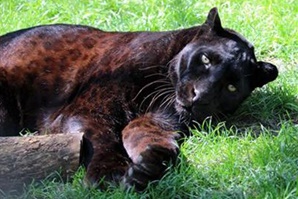
As a non-profit organization they are dedicated to the rescue of neglected, abused and unwanted exotic felines and to educate the public about these beautiful cats. The story of each cat is posted on their enclosure, and information about each species is placed near the enclosures so you can learn about the animals that call In-Sync Exotics their forever home.
Sharkarosa Wildlife Ranch (Pilot Point)
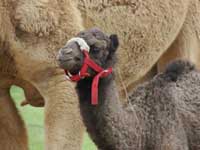
This is a premiere exotic animal facility where they breed rare and endangered animals and supply them to zoos around the world. They provide animals for Jack Hanna shows and just filmed a Dirty Jobs episode with Mike Rowe. You can even get lunch there and watch the bears play!
East Texas Wildlife & Safari Parks
Cherokee trace (jacksonville).
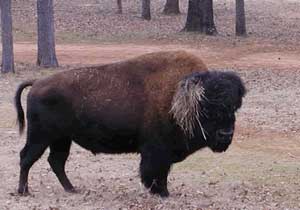
Nestled in the lush piney woods of East Texas, this drive-thru safari is a home to an amazing variety of wildlife. See over a dozen exotic and endangered species that thrive in an open habitat similar to their native territory. Enjoy a self-guided drive through the hills & savannahs of this 300-acre preserve.
East Texas Gators & Wildlife Park (Grand Saline)
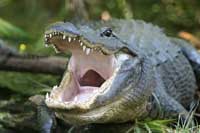
The farm has gator eggs ready to hatch, baby gators and adult gators of all sizes. The alligators have stopped eating until spring…they are laying on the banks of the pond for you to get a good look! Their duck/geese/swan pond has a covered pavilion and is perfect for a relaxing picnic.
South Texas Wildlife & Safari Parks
Grapeland safari park (grapeland).
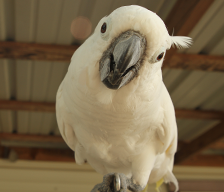
This is a family owned business on 59 acres where you will see kangaroos, cockatoos, tortoise, llamas, capybaras, and many more. You can drive through in your own vehicle or use their bus for larger groups. You are able to feed the animals with food that is provided for you.
Bayou Wildlife Park (Alvin)
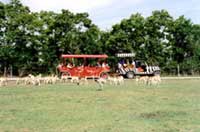
Your tour on special trams takes you over the 80 acres of prairie and woods with the guide delivering an exciting and interesting talk while you feed the animals. There are 50 species of animals and birds totaling 500 in number.
Central Texas / Hill Country Safari & Wildlife Parks
Aggieland wild animal safari (bryan).

How would you like to go on a safari? Sounds fun. With your ticket you have the opportunity to get up close and personal with hundreds of animals throughout their 250 acres. Make sure you purchase a bucket of feed. The animals will love you for it. After your Drive-Thru Safari hop out of your car and visit with 150 mammals, birds and reptiles in the 20 acre zoo.
Topsey Exotic Ranch (Copperas Cove)
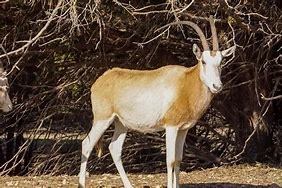
Located on 350 acres of free-range safari, allowing the guests to experience wildlife in a natural setting. Their mission is to provide the animals who call Topsey Exotic Ranch home with the highest standard of care and husbandry practices, while providing the guests with a fun and unique way to experience wildlife in an up-close and natural way.
Y.O. Ranch Headquarters (Mountain Home)
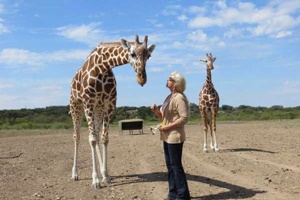
View and photograph animals from around the world either on a Bus Tour, Private Tour, or their Deluxe Tour which gives you more time on the ranch. Their guides are fun and informative with fascinating facts about the animals. Be sure to dress for the weather and bring your binoculars if you wish.
Natural Bridge Wildlife Ranch (Between San Antonio& New Braunfels)
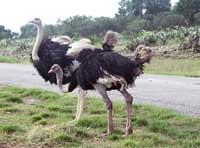
Wildlife Ranch offers the opportunity to view, photograph and feed animals. See species from all over the world from the comfort of your own vehicle. The oldest safari ranch in TX with 400 acres and 4 miles of exciting animals in the beautiful hill country. Read about our trip through Natural Bridge Wildlife Ranch .
Exotic Resort Zoo (Johnson City)

A small family owned wildlife preserve with over 500 animals and 80 different species. The preserve is home to several endangered species that now have a chance to increase their numbers. You can ride on a trailer through the 137 acres. Hundreds of exotic animals from antelope to zebras will come up to the trailer to be feed and petted. Read about our fun experience at Exotic Resort Zoo .
If you want to get outside and experience some exotic animals, check out our map of Texas wildlife and safari parks .
Author: Simon Trask
Simon loves Texas and the Great Outdoors. From East Texas pines to West Texas mountains, he calls North Texas home but is always ready to float a river in Hill Country or go fishing on the Gulf Coast. Simon loves camping and road trips as well, whether it's cruising Highway 287, 82, 69 or 281, that's the true way to see what Texas is all about!
The 2024 State Fair of Texas
The top 10 sights to see in texas, why we saw the aurora borealis in texas, a guide to texas hurricane season, how many cities are in texas.

© Texas Outside 1997-2023 • All Rights Reserved
Join the Texas Outside newsletter

Guided Tour
Ride with us and learn about species from all over the world.
Experience the ultimate Safari Adventure Tour at Natural Bridge Wildlife Ranch! Led by our knowledgeable and dedicated animal specialists, this guided trek offers a hands-on experience with incredible animals. Our Safari Adventure Trek Tours provide enhanced experiences, where guides share fun facts, management insights, and rich heritage, offering a fresh perspective on our African Safari, Texas Style. With a focus on species conservation, our Safari Adventure Trek allows you to learn more from our guides while riding in our custom-built Safari Rover or Safari Shuttle. Get ready for an unforgettable exploration!

Safari Shuttle
Experience the ultimate adventure at Natural Bridge Wildlife Ranch! Join our Safari Animal Rangers on a 75-minute guided trek, encountering fascinating animals. It's a journey of unforgettable fun and discovery!
Safari Shuttle Pricing: $149.99 per party
General Admission is not included and required for entry into the park. Maximum 8 guests per tour.

Safari Rover
Got a group of 9 or more adventurers? Hop aboard a Safari Rover and get up close to 40 different species! Learn from an informative and entertaining Ranch Tour Guide and get ready for plenty of oohs and ahhs.
Safari Rover Booking:
Contact our Tour Coordinator
A DD AN EXCURSION TO YOUR GUIDED SAFARI!
Make your safari even better by adding one or more of these excursions!
You'll be able to select them while booking your safari.

Aviary Experience
The only thing better than seeing our birds is feeding them! Come inside with food on popsicle sticks that dozens of budgies look forward to enjoying. NOTE: Guests must be 3 years or older to enter the exhibit.
Excursion Pricing: $5.00 for general admission ticket holders

Prehistoric Experience
Walk amongst dozens of dinosaurs that move, breathe, and can't wait for you to maybe get a little too close. This excursion is sure to be memorable and filled with plenty of oohs, ahs, and a yikes or two.
Excursion Pricing:
$5.00 for general admission ticket holders 3+ years old
Exotica gone wild: Strange and amazing animals you might encounter on a Texas road trip

Perhaps you've caught a glimpse of one during a Texas road trip.
An aoudad, otherwise known as a Barbary sheep, looks a bit like a domesticated sheep, or perhaps more like a North American bighorn sheep.
More dramatically, you might have spied a swift free-range blackbuck, or a noble nilgai — both antelopes, neither of which seems completely at home in Texas.
Or you spotted deer that, at first glance, might be mistaken for our abundant whitetails, but instead are imported axis or fallow deer.
A few years back, you could have encountered a whole colony of feral Japanese macaques, or snow monkeys, in South Texas.
In fact, tens of thousands of introduced mammalian exotica from other continents range freely in Texas.
"There are more species and greater numbers of exotic mammals in Texas than in another other place in North America, or in some cases, their native ranges in Africa or Asia." says David J. Schmidly, a zoologist and administrator who served as president of Texas Tech University, Oklahoma State University and the University of New Mexico.
More: San Antonio to Salado: 5 cool history day trips that won't take you too far from Austin
We're not counting nutria and other introduced pests here
Some exotica, such as aoudad, intrude on the terrain and resources of indigenous wildlife. Others are lightly regulated by Texas Parks and Wildlife Department, which requires only a hunting license and landowner permission to harvest them, or the U.S. Department of Agriculture, which retains primary regulatory claim on exotica as livestock.
Still others, especially endangered species, are conserved on wildlife ranches. Nonprofit outfits, such as the highly regarded Fossil Rim Wildlife Center in Glen Rose, are serious about efforts to save critically endangered exotica and have found some success reintroducing them to their original domains.
For instance, Fossil Rim led the efforts to repopulate the scimitar-horned oryx in its native Chad, where it had become extinct. Within eight years, their numbers there have risen to 600.
Yet claims of conservation appear to be a mere fig leaf for certain commercial safari ranches.
To be clear, these population estimates of exotica do not count the many millions of other, less welcome and nonnative mammals, such as feral hogs, nutria, black rats, brown rats or house mice that were introduced to Texas, on purpose or by accident.
"Feral hogs, in particular, constitute one of the most serious conservation threats in the state," Schmidly says. "Numbering over 2.6 million in Texas, they are the most destructive of all nonnative mammals, being responsible for significant damage to native plant and animal communities and agriculture, as well as posing a disease risk to humans, livestock and native wildlife."
This story, instead, deals with the charismatic megafauna — antelope, deer, monkeys, etc. — mostly introduced by ranchers for hunting purposes, or sometimes to preserve them.
These creatures might fool one into thinking, on a drive across the diverse landscape of Texas, that this state is instead in Africa, Asia, South America or some other continent.
What to know about free-range exotic mammals
Among the first detailed accounts of these special guests was published in the 1994 edition of "The Mammals of Texas" (University of Texas Press) by David J. Schmidly. A version of this valuable guide, updated as recently as 2016 with co-author Robert D. Bradley, director of the Natural Science Research Laboratory, Museum of Texas Tech University, is now available in digital form for free online from the Natural Science Research Laboratory.
"Unfortunately, since 1994, there has been no comprehensive, statewide survey of exotics," says Lisa Bradley, research associate at that lab. "We really don't have a handle on their numbers, especially populations that are free-range as opposed to fenced and managed."
More: The never-ending story of El Camino Real de Los Tejas extends to East Texas
Bradley — married to colleague Robert of the 2016 guidebook — does confirm that all the Japanese macaques, or snow monkeys, which escaped during the 1980s to form a monkey colony in South Texas have since been brought under control. A free-ranging, breeding population no longer is found in the wild.
As for an updated count of imported antelopes, deer and other free-range exotic mammals, that awaits another survey like the one conducted in 1994 by the Texas Parks and Wildlife Department.
Nilgai were the first to arrive in Texas
Introduced to the King Ranch in South Texas in the late 1920s and early 1930s, the nilgai were the first exotics released in Texas. This enormous antelope inhabits dry, flat or rolling country with some scrub or forest, so it's perfectly adapted for Texas brush country. Native to Pakistan and India, they were imported as game animals, but quickly established free-ranging populations in South Texas and the Hill Country.
More: Read the harrowing tales of Old Zilker Park from families who lived in the middle of it
"They are among the most abundant free-ranging exotic ungulate in Texas, with an estimated population of 15,000 individuals now living in south-central and southern Texas," write Schmidly and Bradley. "The majority of Texas nilgai are found in free-ranging populations on several large ranches in Kenedy and Willacy counties."
Aoudad in Texas may save African species, but can cause problems here
A large sheep with curving horns, the aoudad, or Barbary sheep, looks not unlike North American bighorn sheep. Native to the mountains of North Africa, aoudad were brought to the Palo Duro Canyon area in 1957–58.
Today they can be found along the eastern and southern edges of the Llano Estacado, in the high country of the Trans-Pecos, and on parts of the Edwards Plateau, with a total population estimated at 20,000 to 30,000.
"Fewer than 10,000 individuals are thought to exist within its native range," write Schmidly and Bradley. "Given the vulnerable status in the wild, the Texas population may become important as a source for reestablishing aoudad populations within its former native habitat."
"On the other hand, there is a definite downside to aoudad populations in the state, particularly in the Trans-Pecos region," Robert Bradley adds. "Aoudad are known to carry and transmit diseases, such as pneumonia, to native desert bighorn sheep, as well as directly competing with bighorn for food and water resources. As their numbers have grown and their distribution has spread, aoudad are negatively impacting efforts to save the last remnant populations of native bighorn in the mountains of far West Texas.
"This is a serious problem that must be addressed; the conservation of native wildlife should always take priority over introduced species."
Texas Parks and Wildlife offers limited guided aoudad hunts in the Trans-Pecos through its "Big Time Texas Hunts" program organized through conservation fundraising drawings.
Nope, not white-tailed deer
A fairly large, spotted deer, the axis deer looks from a distance like the indigenous white-tailed deer. It is native to India, where it is known as the "chital." It was introduced into Texas in about 1932 and now can be found in the central and southern parts of the state, with more than 15,000 free-range individuals.
More: 'If you are hot, so is your dog': Tips for walking your pup during steamy Texas summers
"Axis deer are the most abundant exotic ungulate in Texas," Schmidly and Bradley write. "This exotic species is mostly found on managed ranches, many under high fences, but with several free-living populations now established. A large, free-ranging herd occurs on the Texas Tech University campus at Junction in Kimble County, and on surrounding ranches."
Robert Bradley adds, "The big freeze of 2021 appears to have significantly reduced axis deer in Texas, which are strongly adapted to a sub-tropical environment."
Sika deer hail from northern and eastern Asia
A small to medium-sized deer that varies in size and coloration, sika deer are native to Asia from southern Siberia and the Japanese island of Hokkaido, south along both the mainland and islands, and to southeastern China and Taiwan.
"Sika deer have rapidly disappeared from much of their native range following habitat loss," Schmidly and Bradley write. "Sika deer have been introduced in at least 77 counties of central and southern Texas, with free-ranging populations known from 12 of these counties. In 1994, the total statewide population was estimated to be over 5,500 individuals, about half of which were free-ranging."
The seemingly tame fallow deer
These medium-sized, seemingly tame fallow deer with "palmate" (broad, flat surface) antlers pop up in parks everywhere. Others range freely beyond human habitations.
More: 'Untold Stories' revived: What the heck is that in the middle of my Austin park?
"Native to the Mediterranean region of Europe and Asia Minor, fallow deer are the most widely kept of the world's deer and have been introduced to all inhabited continents," Schmidly and Bradley write. "Texas now has over 10,000 individuals, about one-third outside confinement, mostly on the Edwards Plateau and adjacent areas."
The blackbuck antelope has been here since 1932
This medium-sized antelope with corkscrew horns is native to India and Pakistan. Blackbuck originally were released in Texas in the Edwards Plateau in Kerr County in 1932. Today, approximately 20,000 live in the wild, but relatively few outside fenced areas in South Texas and the Hill Country.
"Recently, there have been reports of free-ranging blackbuck populations being established in portions of these regions," Schmidly and Bradley write. "Given the near threatened status in the wild, the blackbuck population in Texas may become important as a source for reestablishing blackbuck populations within its former native habitat."
To save the blackbucks, Fossil Rim in Glen Rose partners with groups such as Conservation Centers for Species Survival and two of their programs, the Source Population Alliance and the Partnership for Species. Both of those programs are designed to help conserve many of the exotic ungulates that are in Texas and elsewhere.
"We have had blackbuck forever," says Adam Eyres, director of animal care at Fossil Rim, which promotes at least 25 species, including the largest herd of common wildebeest in North America and the continent's largest breeding program for cheetahs. "They do very well here, and because the males have small territories, we are able to house multiple males and see all of the normal breeding behaviors of this species. They were once considered more numerous in Texas than their native India."
Exotica as Texas fenced livestock – for now
Some exotic mammals are seldom seen ranging freely, and remain, like traditional livestock, on ranches behind high fences. Yet experts believe that, at some point, some will escape and proliferate. The following descriptions are taken from "The Mammals of Texas":
- Greater kudu : "A cow-sized animal, brown in color with vertical white stripes on sides and flanks. Horns are long, broad and spiraled." Eyres says that his wildlife center has done very well with greater kudu: "We have had them at Fossil Rim for nearly 40 years and they thrive here. We currently have 12."
- Eastern Thomson's gazelle: "A small, pronghorn-sized animal, brownish red in color with horizontal black stripe on sides. Horns are long, slim, and give the appearance of being ringed."
- Sable antelope: A large, elk-sized animal, nearly black in color with white facial stripes and reddish ears. Horns are long, curved over the back. "We have had two herds in the past," Eyres says, "and currently chose to have one herd — and two herds of roan antelope — a similar species, but one that is more in need of conservation help. Our herd is about 35 animals right now, and they live on over 400 acres." Fossil Rim emphasizes species and subspecies that are vulnerable, threatened or endangered. For instance, its zebra herd consists of the vulnerable Hartmann's mountain zebra.
- Scimitar-horned oryx: "A large, elk-sized animal, mostly white in color with reddish-brown chest and shoulders. Horns are exceptionally long, curved over the back." Texas wildlife centers have actively worked to reintroduce this oryx into its native regions. "This is a very cool project that Fossil Rim has been fortunate to play a fairly major role in," Eyers says. "Over the duration of only eight years this 'extinct in the wild' species jumped over 'critically endangered,' and moved up two places on the vulnerability scale to 'endangered.' Still precarious, but over 600 individuals currently living in the wild in Chad."
- Common eland: "A cow-sized animal, tannish in color with faint vertical white stripes on sides and flanks of some individuals. Horns are short, broad and spiraled."
- Red Deer: "A large, elk-sized animal, mostly brown in color with white rump patch – nearly identical to the wapiti or elk. Horns are branched as in the elk."
The strange tale of the escaped snow monkeys
During the 1980s, a colony of feral Japanese macaques, also known as snow monkeys, ran wild in South Texas. Usually found on three main islands of Japan — Honshu, Shikoku and Kyushu — as well as smaller islands, a troop was brought to Texas in 1972 to save them from destruction in Kyoto, where they had become pests.
The tale is told by Robert Bradley in the 2016 edition of "The Mammals of Texas."
"The initial troop, which included about 150 animals, was brought to a ranch near Encinal in La Salle County, where the monkeys remained until 1980, when they became the property of the South Texas Primate Observatory, were confined for behavioral research, and moved to a ranch near Dilley in Frio County," Schmidly and Bradley write. "The observatory was in an enclosed ranch-style environment, and animals were allowed to roam with minimum human interference.
"At first, many of the monkeys perished in the unfamiliar arid brushland habitat, but the macaques eventually adapted to the environment and learned to forage for mesquite beans, cactus fruits and other foods. By the late 1980s, the population had increased from the original 150 animals to between 500 and 600 individuals."
At this point, you can guess the unintended consequences.
"Because of a lack of funding, the monkeys' enclosure fell into disrepair and several escaped," Schmidly and Bradley continue. "The troop was not enclosed within any physical barriers and ranged over an area of approximately 250 acres of ranch land, foraging extensively on native vegetation and enhanced with a daily provision of monkey chow and grain.
"The monkeys took advantage of fabricated perches, row crops and food provided to them, as well as feed pilfered from local farms and ranches. They learned to defeat fences, locks and gates. Much like farm animals, they became semi-dependent on the proximity of humans.
"People began to call authorities and complain about them running around the countryside outside the observatory and damaging property. A bobcat or cougar apparently killed the troop's leader, which stressed the troop, but the population continued to sustain between 500 and 600 individuals.
"The troop had to be relocated on two more occasions until it finally ended up on another site in Dilley that became known as the Texas Snow Monkey Sanctuary.
"In 1996, hunters maimed or killed four escaped macaques, which caused a public outcry; shortly afterwards, legal restrictions were publicly clarified and funds were raised to establish a new 185-acre sanctuary near Dilley. The monkeys now live in an electrified enclosure where they can swim in water tanks, forage through the vegetation, sleep in trees, and live as free individuals with a sound social unit.
"In 1999, the Animal Protection Institute took over the management of the Texas Snow Monkey Sanctuary. Since that time the sanctuary has expanded to become a haven for rescued monkeys of all types. Today, the site near Dilley is called the Born Free USA Primate Sanctuary.
"In addition to the group of snow monkeys that are descendants of the Japanese arrivals, the sanctuary provides refuge for other snow monkeys, other species of macaques, and baboons that were all rescued from roadside zoos, research laboratories and private possession and had lived most of their lives in cages."
How to regulate exotic mammals in Texas
This is where the situation gets complex. Unlike native wildlife, which can be adversely affected by the imports, Texas Parks and Wildlife has no direct regulatory authority over exotic animals, other than issuing hunting licenses. Exotic animals fall under the regulation of the U.S. Department of Agriculture, like livestock.
"Even when populations become free-ranging and perhaps problematic to native wildlife, there is little that Texas Parks and Wildlife or any other authority can do to manage the exotic populations," Schmidly says, "because any regulation of exotics must be brought before the state Legislature as a bill and approved by Congress.
"Thus, the management of exotics is challenging, and many wildlife biologists are of the opinion that a better system for regulating and managing these species in Texas is critical," Schmidly says. "The complexity increases when one considers that the exotic game industry in Texas provides an important income for many landowners, and is worth millions of dollars annually to the rural economy of Texas."
70 exotic species now a regular part of the landscape
While driving across Texas, it occurs to one at some point: This landscape could be from the 1985 movie "Out of Africa." Since the 1920s, wildlife importers, along with scientists trying to save endangered animals such as rhinos, have filled in the blanks of that majestic landscape.
"Even well constructed fences cannot prevent escapes," Brian Chapman and Eric Bolen write in "The Natural History of Texas." "More than 70 exotic species now reside in Texas, and most of these are held on the Edwards Plateau. Whereas bluebonnets form an indelible element of the regional landscape, so today do exotic animals.
"For better or worse, a springtime trip through the Hill Country now features sightings of emus or blackbuck antelope as well as wildflowers."
Michael Barnes writes about the people, places, culture and history of Austin and Texas. He can be reached at [email protected]. Sign up for the free weekly digital newsletter, Think, Texas, at statesman.com/newsletters, or at the newsletter page of your local USA Today Network paper.

IMAGES
VIDEO
COMMENTS
Natural Bridge Wildlife Ranch | Drive Thru Safari | Texas
Days & Hours | Natural Bridge Wildlife Ranch ... Days & Hours
Natural Bridge Wildlife Ranch - All You Need to Know ...
Natural Bridge Wildlife Ranch Hours & Admission Prices
Self-Guided Tour. A real safari in your vehicle at your pace. Travel through the Safari Drive-Thru in the comfort of your own vehicle. Encounter over 40 species from around the world in this picturesque and historic 500-acre Texas Hill Country Safari Ranch. The safari trek spans over 6 miles, taking approximately 1-2 hours to complete.
The Natural Bridge Wildlife Ranch is an African Safari, Texas-Style adventure that you wouldn't expect in the rolling hills just outside San Antonio. It's a unique place where you can drive through hundreds of acres of picturesque landscapes and encounter over 500 animals representing over 40 species. As I love to tell first-timers, it's not ...
9:00 AM - 5:00 PM. Write a review. About. Natural Bridge Wildlife Ranch is an African Safari, Texas-Style. View and feed more than 700 animals representing over 45 species from all over the world in the comfort of your own car. Since 1984, 450 acres of rolling hills, creek beds, and magnificent oak trees that make up the safari drive-thru in ...
Take a walk on the wild side. In the comfort of your own car, that is. At the Natural Bridge Wildlife Ranch, guests can drive through 450 of acres of Texas ranchland, including rolling hills, creek beds and magnificent oaks trees, to admire and interact with more than 500 animals from around the globe (think ostriches, zebras, buffalos and more! Make your next drive an adventurous one and come ...
Specialties: Natural Bridge Wildlife Ranch is an African Safari, Texas-Style! NBWR is home to more than 700 animals, which represent over 45 species. Every continent except Antarctica is represented in the animal inventory. We have been providing memorable, educational and entertaining experiences for 30 years. We opened Tower Creek - a 60-acre expansion project - in 2014 for our 30th ...
You can either purchase tickets online under the "safari options" tab of the park's website, or at the admission booth when you arrive at the park. Admission prices are per person, not per vehicle ...
Natural Bridge Wildlife Ranch | San Antonio TX
26515 Natural Bridge Caverns Rd. San Antonio, TX 78266. 830-438-7400. Visit Website. Order Free Brochure. View Video.
With 40 different species of animals that cover over 500 acres of land, you are sure to see some if the African Safari animals of a lifetime!
If you haven't experienced an African safari and wildlife park Texas style, then you need to head to Natural Bridge Wildlife Ranch which is located just a few miles from New Braunfels in the rolling and scenic Texas Hill Country. Natural Bridge Wildlife Ranch is home to around 500 animals and over 40 species of wildlife from every contintent ...
Natural Bridge Wildlife Ranch
The Safari Grill is a nice break before a second drive through or the Walk-About area. Discount Coupons are available at the San Antonio Visitors Alliance, however they aren't able to be used during Summer weekends. Last, but definitely not least, be sure to have plenty of gas before arriving to the park.
Explore the Wildlife Ranch Drive-through Safari. Discover a world of exotic animals on a thrilling drive-through safari adventure in the heart of Texas! Last updated: Jan 2024. Visit Website. Admission: $28.99 (adults) and $19.99 (kids); Guided Safari Shuttle: $149.99; Safari Adventure Tour: $229.99. More than 500 Miles from you.
Natural Bridge Wildlife Ranch was created in 1984, after the family owners visited similar parks in the northeast and decided they wanted to add diversity to the area around Natural Bridge Caverns. The ranch originally spanned 200 acres, but has grown to cover a whopping 450 acres. It's the longest running and most visited safari in Texas.
Natural Bridge Wildlife Ranch, San Antonio. Explore 450 acres of Texas Hill Country during this 1.5 hour Texas drive through safari featuring animals from all over the world. Each car is provided a bag of animal feed with the cost of admission. ... Buena Vista Wildlife Safari and RV Park, Evant. This drive through safari in Texas is a little ...
9:00 AM - 6:00 PM. Write a review. About. Natural Bridge Wildlife Ranch is an African Safari, Texas-Style. View and feed more than 700 animals representing over 45 species from all over the world in the comfort of your own car. Since 1984, 450 acres of rolling hills, creek beds, and magnificent oak trees that make up the safari drive-thru in ...
Visitors are welcome to travel through the Wildlife Ranch as many times as they would like during their visit. The only exception is that visitors cannot leave and then return later that day. The Walk-A-Bout area is included. While visiting times vary from visitor to visitor, we safely suggest allocating at least five hours, which also allows ...
Natural Bridge Wildlife Ranch (Between San Antonio& New Braunfels) Wildlife Ranch offers the opportunity to view, photograph and feed animals. See species from all over the world from the comfort of your own vehicle. The oldest safari ranch in TX with 400 acres and 4 miles of exciting animals in the beautiful hill country.
SAN DIEGO, Sept. 5, 2024 /PRNewswire/ -- San Diego Zoo Wildlife Alliance is celebrating the birth of a Sumatran tiger cub at the San Diego Zoo Safari Park's Tull Family Tiger Trail habitat.
Safari Shuttle. Experience the ultimate adventure at Natural Bridge Wildlife Ranch! Join our Safari Animal Rangers on a 75-minute guided trek, encountering fascinating animals. It's a journey of unforgettable fun and discovery! Safari Shuttle Pricing: $149.99 per party. General Admission is not included and required for entry into the park.
As early as the 1920s, some native mammals of South America, Asia and Africa have been introduced to Texas; now many of them have gone free range.